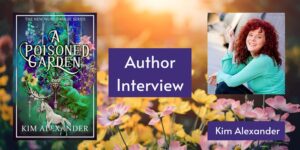You write novels for Adults learning English as a new language. How did you get started in that genre and how is that different from writing traditional novels?
I’ve been teaching English as a Second Language since I was a resident assistant at a private language institute housed on the Seattle University campus back in the early 1970s. This fall quarter marks my third decade working with immigrants and refugees at South Seattle College. Through the years I’ve taught all levels and skill areas from low beginners to college prep.
For the past decade or so I taught the intermediate to upper levels. Not being a fan of most texts written for ESL instruction, I used Young Adult fiction. A few years back, I moved into the lower levels and YA was no longer an option. It was just too difficult. I needed books written at a first or second grade reading level that weren’t picture books full of talking animals and the like. One day I was whining to my writing partner, Pamela Hobart Carter, about my struggles to find appropriate reading materials for my adult students. Her response: “I’ll write one for you!” And, of course, I figured if she could do it, I could too!
Long story short, we co-wrote twelve easy novels. The first challenge was in expressing complex ideas in simple language. This is a skill required of any language teacher. The second challenge was in finding a publisher. In the end, we created No Talking Dogs Press and self-published in order to make the books available as soon as possible, at an affordable price.
I should also add that while the six books in the American Holidays Collection are targeted for immigrants and refugees, those in The Old House Series and The Good Friends Series may also be of interest to native speakers learning to read or to elderly readers struggling with memory loss or attention span.
You are often applauded for how exceptional the sensory details are in your novels. To what do you attribute your success in that aspect of your writing?
Thank you, Elena. When I write, I see the scene almost like an moving image in my mind’s eye. I write to describe what I see, and I struggle to slow down enough to include those sensory details you mention. I suppose I’m naturally a hyper sensitive person – the kind who cuts tags from clothes and works in silence – but I also consciously think of sight, sound, smell, touch and even taste as I key in my first drafts and add what I find lacking.
Also, I write about places and people I love. As you know, Running Secrets, Biking Uphill, and Walking Home are all set in Seattle, particularly on Alki Beach and Capitol Hill. These are places I carry deep in my soul. Despite having lived in California, Hawaii, Venezuela and Mexico, I was born and raised in the Pacific Northwest. It is my home. My characters are amalgamations of people I’ve known. Their stories are stories I cherish for the trust they have entrusted in me. Perhaps when a writer is emotionally close to her work, the sensory details flow more easily.
You’ve written a trilogy about immigrants living in the United States. Do you draw solely on your experience teaching English as an additional language? Or do you do research? Tell us about the process of the trilogy.
The Alki Trilogy began with the story of Gemi Kemmal, an Ethiopian home healthcare nurse in Seattle, in Running Secrets. At South Seattle College and throughout the U.S. we see large numbers of African immigrants and refugees entering healthcare because the need exists and jobs are readily available, particularly in the care of our aging population. So I drew from my teaching experience, but I also needed to research and understand the issues around healthcare as well as suicide.
Antonia’s story in Biking Uphill required even more research and plot development because I was determined to have an accurate timeline reflecting Salvadorian history that lined up correctly to Antonia’s age and experiences as an undocumented immigrant in the U.S. Given my years in Venezuela and Mexico in the 1980s, my personal experience and interest were a big help.
I’d heard about conflict between African immigrants and African-Americans from my immigrant students and from news. I’d seen the powerful documentary, Bound: Africans vs. African Americans. But to write Walking Home I needed the African-American perspective and I wanted it first-hand. Fortunately, I teach at a large urban college where one of my colleagues, an African-American sociology instructor, invited me to survey one of his classes.
The conversation that followed reinforced my beliefs and my desire to write Kidane’s story, but I still needed to fact-check the various heartbreaking versions of escape I’d heard from the multiple students who became Kidane. Sadly, the stories continue. As we know, according to current UNHCR statistics 8% of the refugees entering Europe in the current crisis are from Eritrea.


Many thanks for the interview, Elena.